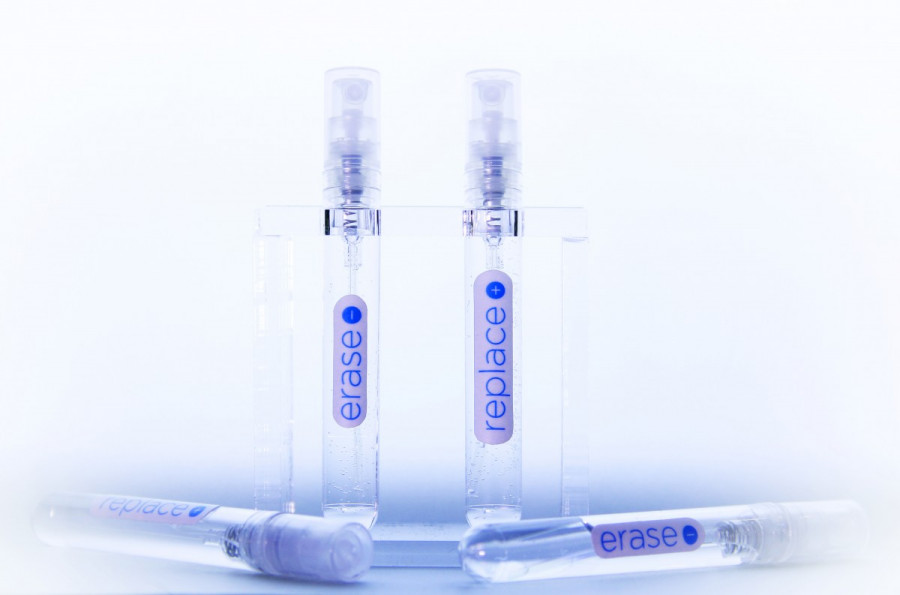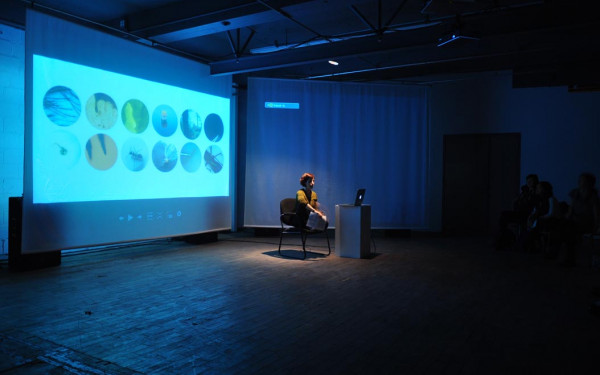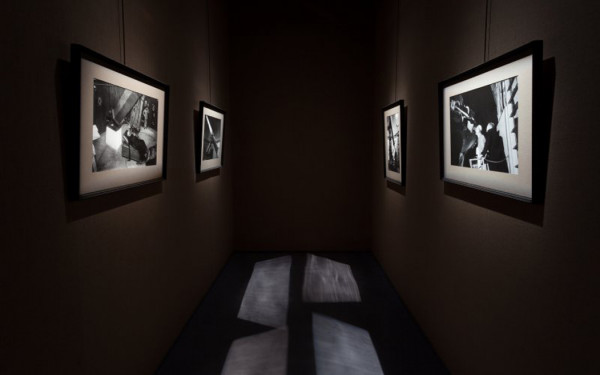The (Literal) Body Politic
Eastern Bloc Presents BPLTC Part 1: Cellular Control
Eastern Bloc will be kicking off the first of a three-part series of exhibitions called BPLTC (pronounced “biopolitic”) in a few short weeks, starting Sept. 24. Broadly speaking, the series will explore the role of the sciences and their technological applications in relation to human activity and sociopolitical interests.
LEAVE YOUR FINGERPRINTS AT THE DOOR
Eliane Ellbogen, one of the founding members of Eastern Bloc and co-curator of BPLTC, says that the exhibit was largely inspired by the reality of working with non-Canadian artists. An issue that she’s seen come up often in recent years is that many artists entering Canada are now required to give up their personal biometric information at the door. (Citizenship and Immigration Canada describes biometrics as “the automated recognition of individuals based on unique physical features such as fingerprints”).
The Temporary Resident Biometrics Project was instated by CIC in 2013 with the goal of reducing identity fraud in an age where the transnational movement of people is greater than ever. What it implies for “certain foreign nationals” wishing to get a visa is that they now need to submit fingerprints and a photo as part of their application. “Certain foreign nationals” is not more clearly specified by CIC.
“All of this got us thinking about how peoples’ biological data intersects with politics on a global scale,” says Ellbogen.
THE SELLING OF CELLS
While BPLTC addresses the overarching theme of how technology both facilitates the transfer of information and comes to the detriment of personal control, the series’ three parts will tackle different angles. Part one, Cellular Control, is primarily concerned with the implications of data collection at the DNA level.
Cellular Control will be led by three artists: Heather Dewey-Hagborg (United States), Verena Friedrich (Germany), and Hyla Willis (United States). This segment will include visual, audio and interactive components meant to explore and bring awareness to some of the common ways humans try to control activities normally exclusive to natural organisms. For example, genetic manipulation is now greatly aided by the digital age and technological tools, yet most people have no idea of what experiments are being conducted and how this information is being used.
Tackling the theme of biopolitics at the fundamental DNA level, Dewey-Hagborg’s installation looks at the reality of biological monitoring. As DNA is becoming more commonly used to analyze and track people, “Invisible” is a semi-humorous work that proposes a way to erase the genetic traces we leave in public spaces (think the 1997 movie Gattaca).
“Electronic surveillance currently pervades most Americans’ daily lives with voyeurs ranging from corporations to the government, police, and private citizens,” said Hagborg. She says that inspiration for her work has roots in her background as a programmer, which gave her insight on the exchange of surveillance systems and “big data.”
Taking Cellular Control in a slightly different direction, Friedrich connects language and the use of bodily materials with her piece titled “Cellular Performance.” In her video, she examines the names of various “cosmeceuticals” (skin care products that profess pharmaceutical benefits at the DNA level) by culturing human and animal skin cell lines that are typically used in the cosmeceutical industry, and by manipulating them to form words often found in related advertising.
Willis, from Cyber-feminist collective subRosa will present a project that underlines the divide between sources of genetic material (humans, plants and animals) and who profits from them. Focusing on the political history of female reproduction, “Cell Track: Mapping the Appropriation of Life Materials” seeks to bring attention to issues that affect women specifically and to highlight the need for an activist, feminist-oriented facility where artists and independent scientists can conduct their own embryonic stem cell research.
“In Cell Track, we look at the privatization and ownership of biological materials and processes, and ask who should own biology itself,” said Willis.
An example she gives is the patenting of the BRCA1 gene, which is known to be a likely indicator for breast cancer. Though successfully challenged in a 2012 Supreme Court battle (“Association for Molecular Pathology v. Myriad Genetics”), the action of staking private ownership over this gene cost women wanting to get tested for it expensive royalties.
Cell Track is comprised of two components: a wall-based installation and animated website.
SAVE THE DATES
Considering the scope of the subject, it’s no surprise that the team at Eastern Bloc decided to turn it into a three-part deal. After Cellular Control comes Identity Control (Nov. 5) and Food Control (Jan. 14).
A vernissage for BPLTC will be held at 6 p.m. on Sept. 24. Eastern Bloc is situated on Clark St., between de Castelneau and Jean Talon Sts. Entry is free.
Peripheral events will include an artist talk with Hyla Willis on Sept. 26, and a guided tour of the exhibition with members of Eastern Bloc’s programming committee on Sept. 27.


_600_832_s.png)




